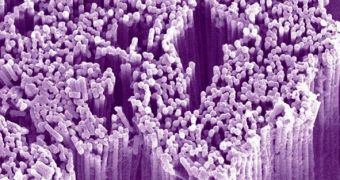Miniaturization is the key word to the entire computer hardware manufacturing industry as all the producers are constantly looking for new ways to increase the performance of their products while maintaining the same relative dimensions. As Moore's Law is still true and the number of the components inside a computer chip is doubling every 24 months, without the increase of the chips' surface area, hardware manufacturing companies need to come up with new ways to miniaturize everything inside the said chip, including the wiring between separate components.
As the choice background material for all computer chips is the silicon, a semi conductive material, special wires must be produced and then placed on the surface of the underlaying silicon substrate. Because of the miniaturization trend, producing these wires is increasingly difficult and costly and now researchers at the National Institute for Nanotechnology (NINT for short) from the United Kingdom demonstrated successfully a new technology for producing small wiring conductive circuits on top of silicon based chips. As the needed wires are very small, the scientists used self assembling molecules in order to form conductive lines. "Computer chips are constantly getting smaller and smaller. There's an unrelenting decrease in size. And the question arises, how do you wire these things in?" said Dr Jillian Buriak, University of Alberta professor and senior research officer at the National Institute for Nanotechnology, who was then cited by the news site theengineer. "If you're going to make something on the order of 22 or even 18 nanometres, then you'd better have a plug that's about that size, too."
Using the new technology a whole new generation of wired circuits can be produced, thanks to the wire system which allows wires to become 5,000 times longer than they are wide and these wires can then be used to link between them smaller transistors or other miniaturized electronic components which are typically found inside computer central processing units or other devices. According to Jillian Buriak the molecules that are forming the nano sized wire are self assembling just like the DNA is in all living things. She explained that this technology is cheaper and more environmentally friendly than the current technology of producing computer chips which uses lithography in order to lay down the circuits on the silicon substrate. The molecules that were used in these experiments are based on very simple structures, basically they are polymers so the self assembling feature is something natural for them.
Dr Jillian Buriak also said that this new wiring technology could be the future of the computer hardware industry as the hardware producers are constantly looking for new ways of speeding up their products while keeping costs at a reasonable level.

 14 DAY TRIAL //
14 DAY TRIAL //